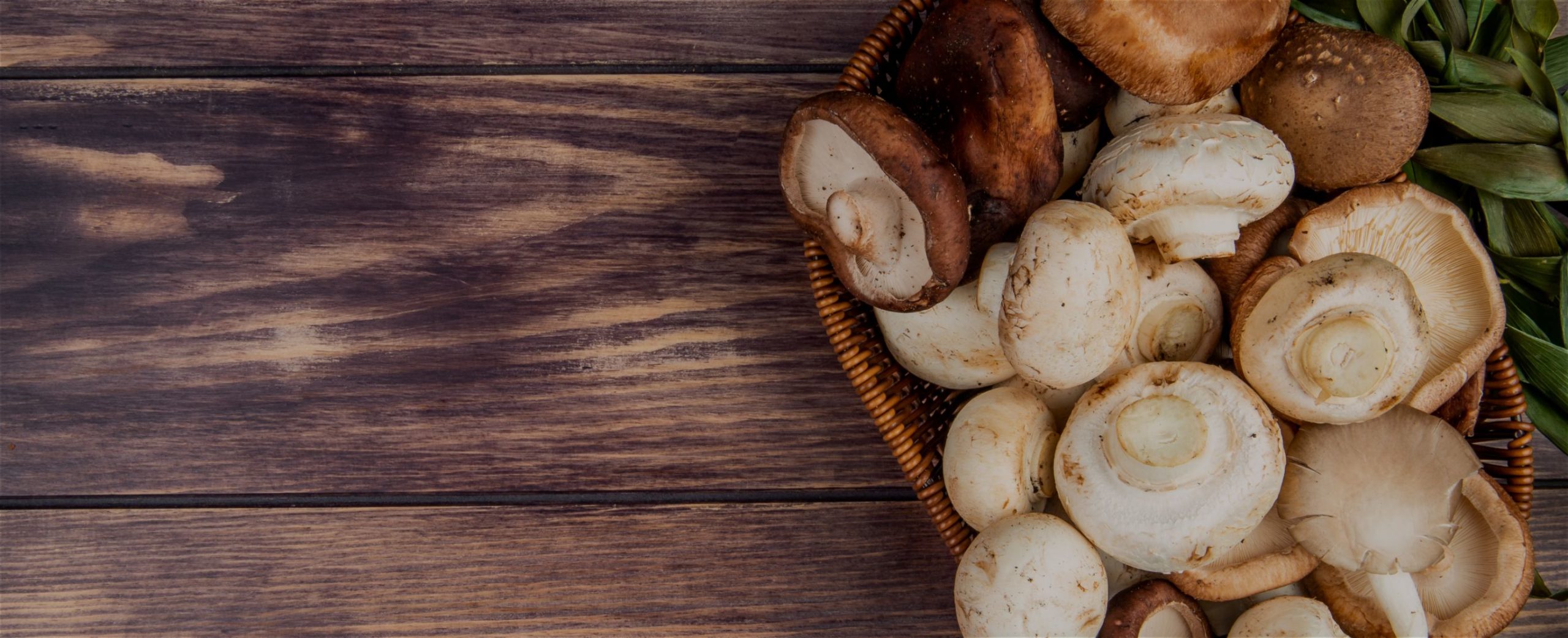
Frequently Asked Questions
About Mushrooms
Mushrooms sure are mysterious, aren’t they?
Not an animal or a vegetable, but a kingdom all their own, mushrooms are popping up everywhere – from restaurant menus to store shelves, and it’s making you realize you have some questions!
Learn the answers to some of the most commonly asked questions about South Mill mushrooms and understand how they’re grown, how to prepare them, and important information about our mushrooms.
MUSHROOM FREQUENTLY ASKED QUESTIONS
Looking to learn more about fresh mushrooms?
Neither. Mushrooms are fungi, which are so distinct in nature they are classified as their own kingdom, separate from plants or animals. While sometimes placed in the vegetable category, mushrooms are not vegetables.
Mushrooms are grown in almost every state, however, Pennsylvania, home of South Mill Champs, accounts for approximately 60 percent of the total mushroom production in the United States.
The most popular mushroom variety grown in the U.S. is white button, followed by crimini (brown or baby bellas), portabella, shiitake, oyster, enoki, and maitake.
In the wild, mushrooms are seasonal, though because South Mill Champs mushrooms are grown indoors, they are harvested year-round – even in the winter!
Yes. The stems and caps of most mushrooms are edible, however, mushrooms like shiitake tend to have tough woody stems, not so great for eating, but they do make an excellent mushroom stock.
Yes. Umami is the fifth basic taste after sweet, salty, bitter, and sour. Umami (pronounced oo-MAH-mee) is a savory, rich or meaty taste sensation. One of the main components of umami is glutamate, an amino acid and building block of protein. For food lovers, it balances savory flavors and full-bodied taste with distinctive qualities of aroma and texture. Mushrooms provide a burst of rich, savory flavor which is umami.
Mushrooms do not need to be peeled in any fashion. They can be diced, chopped, or eaten whole.
Yes, the gills of edible mushrooms such as the portabella can be eaten. However, it’s not unusual for chefs to remove the dark gills for aesthetic reasons as they can alter the color of sauces, soups or gravies.
Portabella mushrooms have long been praised by vegetarians and vegans for the ability to stand in for meat. Their intense flavor and meaty texture make them an easy-to-use alternate for meat in burgers, fajitas, tacos, pasta and pizza. They are also delicious when dried and preserved as jerky.
King trumpet mushrooms have also become an on-trend ingredient among North American chefs who often use king trumpets in place of meat in pulled “pork” sandwiches, vegan “scallops” and even “ribs.”
Yes, mushrooms can be frozen, however, they should be cooked and cooled first. When you are ready to use them, pop them directly into your pot or pan and allow them to come to temperature.
According to the FDA, you should “wash all produce thoroughly under running water before preparing and/or eating, including produce grown at home or bought from a grocery store or farmers’ market.” So, yes, it is recommended that after rising in cool water mushrooms are gently dried with a paper towel.
It’s essential to err on the side of caution if you believe a mushroom or any food may have gone bad. When a mushroom passes its prime, it typically develops a slimy texture. If it reaches this stage, we recommend throwing it away.
Some varieties of mushrooms have varying levels of vitamin D. Check the label to be sure.
Mushrooms are fat-free, low-calorie, and low in sodium.
Storing them in their original packaging or in a brown paper bag keeps them fresh.
A mushroom sustainability study by the Mushroom Council revealed the mighty mushroom is not only healthy on the plate, it’s also gentle on the planet. This study found that production of a pound of mushrooms requires only 1.8 gallons of water and 1.0-kilowatt-hours of energy and generates only 0.7 pounds of CO2 equivalent emissions. In addition, the annual average yield of mushrooms is 7.1 pounds per square foot – meaning up to 1 million pounds of mushrooms can be produced on just one acre.
You guessed it. A mycologist is one who studies mycology. Mycology is the branch of biology concerned with the study of fungi, including their genetic and biochemical properties, their taxonomy, and their use to humans as a source for tincture, medicine, food, and entheogens, as well as their dangers, such as toxicity or infection.
*** Parallax Eelement – Do Not Delete ***







